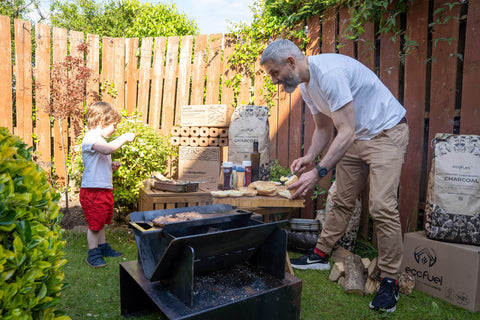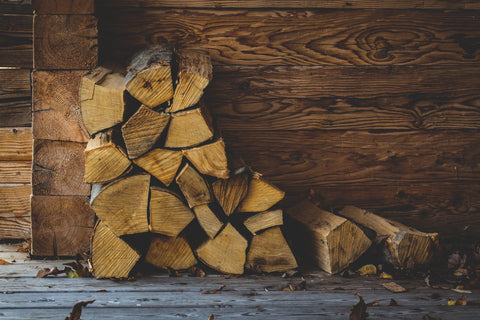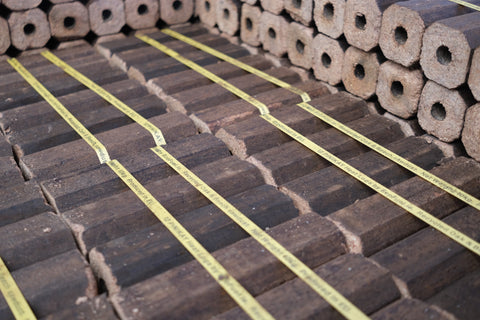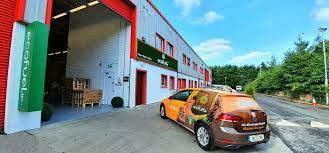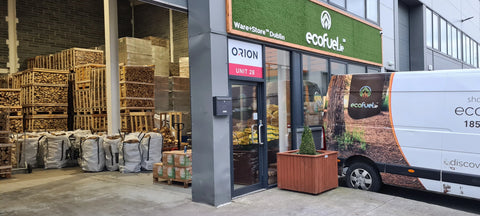While we transition to heat pumps and solar panels, much of Ireland still relies on solid fuels for open fires, wood burners, and biomass boilers. And many many traditional restaurants use charcoal or wood briquettes for cooking.
So if we’re burning stuff for heat and energy, how can we make it sustainable, carbon neutral, and cleaner for the air we breathe?
At Ecofuel, we’ve spent eight years answering this question. Here are 8 steps to choosing sustainable firewood.
1. Choose firewood or biomass because it’s carbon neutral
Responsibly sourced firewood is considered by the EPA to be carbon neutral. Wood from well-managed forests is continually regrown so the carbon is naturally recaptured. It’s only burning fossil fuels or peat that introduces stored ancient carbon into the atmosphere, so they’re disastrous for our climate targets.
In terms of air pollution, an EPA study compared firewood against peat briquettes, coal, and smokeless coal and found that properly dried firewood (especially kiln-dried hardwood) had the lowest emissions of small particles (PM2.5) and NOx.
2. Look for fuel with (very) low moisture content
Moisture content is the most critical factor in choosing firewood. Dry wood is easier to light and burns more efficiently, with less smoke which helps keep your stove and chimney clean and cuts pollution. That same EPA study showed that wet wood is even worse than coal and peat briquettes and almost as polluting as turf.
The EPA recently introduced standards for moisture content to address this, making sure firewood and biomass briquettes are below 25% moisture (20% by 2025).
At Ecofuel, our kiln-dried hardwood typically has just 10-15% moisture content. But for the lowest moisture content, compressed biomass products are the most efficient, with just 5-7% moisture content in EcoBriquettes.
3. Buy from EPA registered suppliers
Suppliers are now required to join the EPA Solid Fuel Register every September to sell certified products that meet the new standards. Additional standards like the Woodsure ‘Ready To Burn’ ensure regular annual testing to make sure fuels meet the highest standards.
4. Look for sustainably sourced products
The most sustainable products like EcoBriquettes are made from recovered wood bypass from sawmills and furniture factories. They’re dried and compressed, bound together with just their natural lignin in the wood itself.
Our kindling is made from waste offcuts from furniture factories. Our organic lumpwood cooking charcoal, uses only wood from sustainable, managed forests.
Look for FSC certification to make sure both wood and biomass fuels are fully traceable from forest to fireplace.
5. Choose the right fuel for your stove.
Different types of fireplace burn differently so you need fuel to match. Oak for example, is especially dense and produces great heat in a stove or insert fireplace where there’s lots of airflow. But it’s wasted in an open fireplace and doesn’t burn as well. Here you’ll need a species that burns more easily, like ash or birch. Or combine different types to get the right kind of fire.
EcoBriquettes burn well in any kind of fire, so you might need to close the vents on your stove a little more than you’re used to so they last longer. They also expand as they burn, so you need less fuel to start with and you can break them up into smaller pieces before lighting.
At Ecofuel, we love to share all this insider knowledge and we’re always learning so we can advise on the best type of fuel for you.
6. Choose sustainable cooking fuels too
There’s a world of difference when you switch from those cheap charcoal briquettes to organic lumpwood charcoal, where you still see the rings and the grain in the wood it was made from.
Not only does it taste better and last longer on the barbecue, it’s 100% natural too. It almost becomes an ingredient itself and some barbecue obsessives even cook directly on the glowing charcoal.
And for pizza aficionados, we dedicated briquettes designed especially for cooking, with an octagonal profiel so they don’t roll around in your pizza oven.
7. Think about your firepit
You’ve invested into a firepit so you can enjoy the long al fresco evenings, only to get smoked out when you use poor quality firewood, probably one of those nets of who-knows-what-kind-of-wood-it-is? you get at any garage forecourt. Without the pull of a chimney, the smoke swirls around the garden, stings your eyes and makes your clothes stink.
It’s a mistake you’ll only make once so it’s crucial to use good quality dry fuel there too.
You certainly can’t just burn garden rubbish (that’s illegal) but you can’t get away with firewood that hasn’t been properly dried.
8. Choose a supplier that’s driven by sustainability
For some, sustainability is something they have to adhere to. An afterthought.
At Ecofuel, sustainability is in our DNA so we’re always working to be better than yesterday. We ditched the shrink-wrap plastic for cardboard boxes with paper tape for easier recycling. We worked with University labs to study on our own products so we can hold ourselves to a higher standard. And we contribute to planting trees to improve our own native forestry here in Ireland.
So if you’re too busy to do your own research, you can trust that we’ve done ours.

